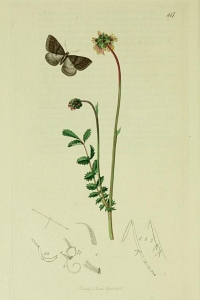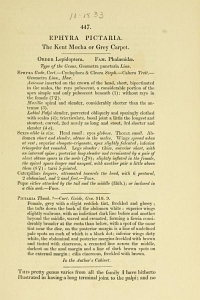Inhalt
1. Lebendfotos
1.1. Falter
1: Deutschland, Mecklenburg-Vorpommern, Plau am See, 81 m, Feldgehölz, Lichtfang, 21. April 2011 (Foto: Monty Erselius), conf. Rolf MörtterForum
2: Deutschland, Rheinland-Pfalz, Unkel, Rheintal, Am Stux, trocken-warme Weinbergslage, am Licht 16. März 2007 (Foto: Michael Stemmer), det. Michael StemmerForum
3: Deutschland, Bayern, Unterfranken, Gde. Karsbach, Garten, 230 m, 12. April 2011, in der vorhergehenden Nacht am Licht (Studiofoto: Klaus Nowak), conf. Rolf MörtterForum
4-6: Deutschland, Rheinland-Pfalz, bei 55596 Schloßböckelheim, Weinberg mit Verbuschung, am Licht, 2. April 2011 (Studiofotos: Rainer Roth), conf. Egbert FriedrichForum
7: Deutschland, Baden-Württemberg, Haigerloch-Stetten, 480 m, Ortsrandlage, Haustür am Licht, 23. April 2007 (Foto: Herbert Fuchs), det. Herbert Fuchs, conf. Egbert FriedrichForum
8: Deutschland, Rheinland-Pfalz, Unkel, Rheintal, Am Stux, trocken-warme Weinbergslage, 31. März 2005 (Foto: Michael Stemmer), det. Helmut KolbeckForum
9: Deutschland, Thüringen, Weimar, auf Ettersberg, 400 m +- 50 m, 30. März 2019, Lichtfalle (leg., det. & fot.: Hartmuth Strutzberg)Forum
10: Deutschland, Niedersachsen, Landkreis Lüneburg, Walmburgsburger Werder, halbtrockenrasiges Deichvorland mit viel Pappelbewuchs in den Randbereichen, 16. März 2020 (Frank Stühmer)Forum
11: Frankreich, Hérault, Faugères, 380 m, 12. März 2023, Lichtfang (det. & Studiofoto: Dierk Baumgarten)
.
1.2. Raupe
1-2: braune Form, Deutschland, Rheinland-Pfalz, Unkel, Rheintal, Am Stux, 142 m, 12. Juni 2006 (Fotos: Michael Stemmer), det. Thomas Fähnrich & James ConnellForum
3-4: braune Form, Deutschland, Nordrhein-Westfalen, Warburg Diemeltal, 23. Juni 1997 (Fotos: Hans-Joachim Weigt)Forum
5: grüne Form, Deutschland, Nordrhein-Westfalen, Hochsauerlandkreis, Marsberg NSG Kregenberg, 28. Juni 1984 (Foto: Hans-Joachim Weigt)Forum
6: L3: Deutschland, Nordrhein-Westfalen, Hochsauerlandkreis, Marsberg NSG Kregenberg, 14. Juni 1984 (Foto: Hans-Joachim Weigt)Forum
2. Diagnose
2.1. Männchen
2.2. Weibchen
2.3. Beschreibung von John Curtis als Ephyra pictaria
1-3: Curtis (1823-1840) [nach Copyright-freien Scans auf www.biodiversitylibrary.org]
2.4. Erstbeschreibung
1-2: Herrich-schäffer (1839: 80-81) [nach Copyright-freien Scans auf www.biodiversitylibrary.org]
3. Biologie
3.1. Habitat
1: Deutschland, Baden-Württemberg, Königheim, NSG Langenfeld, gebüschreicher Halbtrockenrasen, 352 m, 13. April 2022 (Foto: Maurizio König)Forum
4. Weitere Informationen
4.1. Etymologie (Namenserklärung)
pictaria: „pictus bemalt, bestrichen.“
4.2. Andere Kombinationen
- Erannis distinctata Herrich-Schäffer, 1839 [Originalkombination]
- Lomographa distinctata (Herrich-Schäffer, [1839])
4.3. Synonyme
- Bapta pictaria (Curtis), 1833
4.4. Literatur
- Curtis, J. (1823-1840): British Entomology; Being Illustrations and Descriptions of the Genera of Insects Found in Great Britain and Ireland: Containing Coloured Figures from Nature of the Most Rare and Beautiful Species, and in Many Instances of the Plants upon which they are Found. Vol. VI. Lepidoptera, Part II. — [Not paginated]. London (E. Ellis & Co.).
- Ebert, Steiner & Trusch (2003) (= Ebert 9), 529-531.
- Erstbeschreibung: Herrich-Schäffer, G. A. W. (1839): Faunae Insectorum Germanicae initia oder Deutschlands Insecten. Heft 166: Inhaltsverzeichnis, 49-96, pl. 1-24. Regensburg (G. J. Manz).
- Koçak, A. Ö. (1993): Traky anin ilkbahar lepidopterleri hakkinda faunistik notlar [Faunistical Notes on the Spring Lepidoptera of Turkey in Europe]. — CESA Miscellaneous Papers 17: 1-8. [Digitalisat auf archive.org]




![Vorkommen in Dänemark (außer Färöer-Inseln und Grönland) [Aarvik & al. (2017): Nordic-Baltic Checklist]](/res/img/flag/dk.gif)
![Vorkommen in Polen [Buszko J. & J. Nowacki [eds] (2017): A Distributional Checklist of the Lepidoptera of Poland]](/res/img/flag/pl.gif)
![Vorkommen in Tschechien [Laštůvka, Z. & J. Liška (2011): Komentovaný seznam motýlů České republiky]](/res/img/flag/cz.gif)
![Vorkommen in Großbritannien [Agassiz, Beavan & Heckford (2013): Checklist of the Lepidoptera of the British Isles]](/res/img/flag/gb.gif)
![Vorkommen in Belgien [De Prins(2016): Catalogus van de Belgische Lepidoptera]](/res/img/flag/be.gif)
![Vorkommen in den Niederlanden [Kuchlein & de Vos (1999): Annotated Checklist of the Dutch Lepidoptera]](/res/img/flag/nl.gif)
![Vorkommen in Luxemburg [Hellers (2021): NSG Brill]](/res/img/flag/lu.gif)
![Vorkommen in Frankreich (europäisches Territorium ohne Korsika) [Vandromme et al. (2020): Liste systématique et taxinomique des Lépidoptères de France]](/res/img/flag/fr.gif)
![Vorkommen in Andorra [Vives Moreno A. (2014)]](/res/img/flag/ad.gif)
![Vorkommen in Spanien (Festland) [Vives Moreno A. (2014)]](/res/img/flag/es.gif)
![Vorkommen in Portugal (Festland) [Corley (2015): Lepidoptera of Continental Portugal]](/res/img/flag/pt.gif)
![Vorkommen in Italien (Festland und kleine festlandsnahe Inseln) [Parenzan & Porcelli (2007): I Macrolepidotteri Italiani]](/res/img/flag/it.gif)
![Vorkommen in Marokko [Skou & Sihvonen (2015: 365)]](/res/img/flag/ma.gif)































